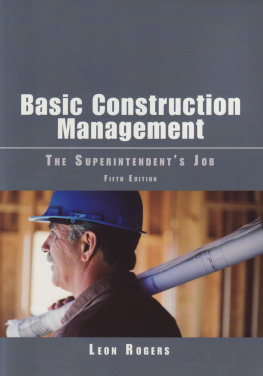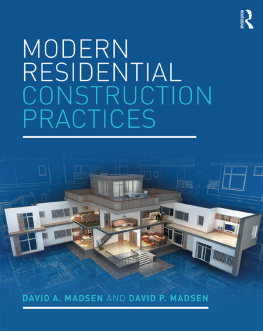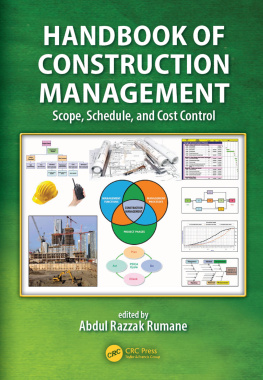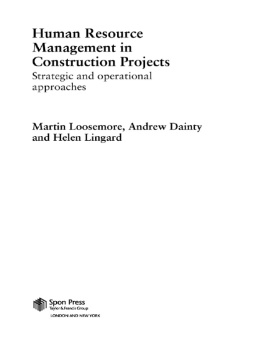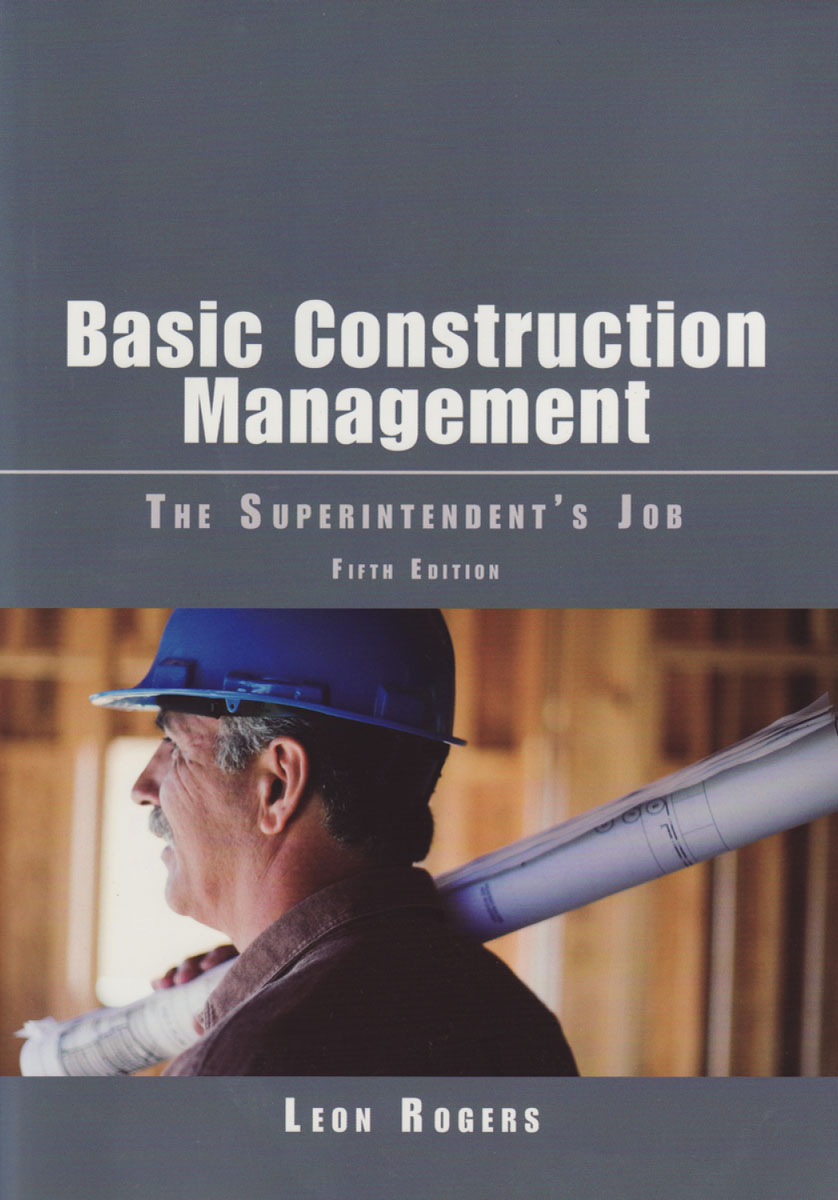

Basic Construction Management: The Superintendents Job, Fifth Edition
BuilderBooks, a Service of the National Association of Home Builders
Courtenay S. Brown | Director, Book Publishing |
Natalie C. Holmes | Book Editor |
Torrie L. Singletary | Production Editor |
Circle Graphics | Cover Design |
Pine Tree Composition | Composition |
McNaughton & Gunn | Printing |
Gerald M. Howard | NAHB Executive Vice President and CEO |
Mark Pursell | NAHB Senior Staff Vice President, Marketing & Sales Group |
Lakisha Campbell | NAI IB Staff Vice President, Publishing & Affinity Programs |
Disclaimer
This publication provides accurate information on the subject matter covered. The publisher is selling it with the understanding that the publisher is not providing legal, accounting, or other professional service. If you need legal advice or other expert assistance, obtain the services of a qualified professional experienced in the subject matter involved. Reference herein to any specific commercial products, process, or service by trade name, trademark, manufacturer, or otherwise does not necessarily constitute or imply its endorsement, recommendation, or favored status by the National Association of Home Builders. The views and opinions of the author expressed in this publication do not necessarily state or reflect those of the National Association of Home Builders, and they shall not be used to advertise or endorse a product.
2009 by NAHB. All rights reserved. No part of this book may be reproduced or utilized in any form or by any means, electronic or mechanical, including photocopying and recording or by any information storage and retrieval system without permission in writing from the publisher.
Printed in the United States of America
12 11 10 09 1 2 3 4 5
Library of Congress Cataloging-in-Publication Data
Rogers, Leon.
Basic construction management: the superintendents job / Leon Rogers.5th ed.
p. cm.
Includes bibliographical references and index.
ISBN-13: 978-0-86718-645-1
ISBN-10; 0-86718-645-3
1. BuildingSuperintendence. I. Title.
TH438.R612 2008
690.068dc22
2008034481
elSBN: 9780867186932
For further information, please contact;

National Association of Home Builders
1201 15th Street, NW
Washington, DC 20005-2800
800-223-2665
Visit us online at www.BuilderBooks.com.

I saw a hand-drawn set of house plans the other day and had to laugh. Indeed, when the first edition of this book was written in 1981, the construction world was a very different place. The manuscript was typed on a then state-of-the-art IBM Selectric, which cost more than todays personal computers. PCs were unheard of, cellular phones had not been invented, construction scheduling was just in its infancy, and Total Quality Management (TQM) was a Japanese phenomenon. We were beginning to apply business management principles to residential construction projects, but construction management still was largely by the seat of your pants.
Much has happened in 28 years. Most residential builders are almost completely computerized. Home buyers have become increasingly sophisticated and demanding, and construction project management is more complex. Cost control and analysis of cost overruns and variances are now standard practices. Formal safety programs are more common. Computerized scheduling is widely accepted. TQM and continuous improvement have been successfully implemented in many companies. Thanks to the educational efforts of NAHBs Home Builders Institute, industry consultants, and educators in college construction management programs, todays builders are more highly educated and better prepared. But so are their competitors. Those who have survived the ups and downs of the housing cycle have done so by managing better and applying basic principles to their day-today work.
Through all of the changesperhaps because of themresidential building today remains a dynamic, exciting, and challenging business, one in which the construction superintendent plays a large and important role.
However, todays superintendents face a host of demands. Construction typically includes greater customization of standard designs. The designs themselves are more innovative and complex, resulting in more construction challenges. Materials and methods are continually changing. Superintendents now use computers on a daily basis for cost control, scheduling, and overall project management.
Still, the feeling you get from successfully organizing people, materials, and equipment to create a beautiful and functional home is uniquely satisfying. When you pass by a home that you helped to build years earlier, you look upon it with pride and think, I built that! This pride in workmanship is essential for success in the construction business, because the truly successful in any endeavor are often not those who are wealthy or brilliant, but those who are genuinely good at what they do and who take pleasure in it.
Most people who are good at what they do apply simple rules and goals to their tasks. This book attempts to teach the rules of construction management that have helped countless construction professionals and aspiring professionals like you to maintain a budget, comply with a schedule, and establish quality control. These three keys to successful project management are the foundation of long-term success in home building.
The author extends special thanks to the many builders and industry experts who have contributed their management successes and ideas for each edition of this book and to Natalie Holmes for editing the fifth edition. I am grateful to the builders and others in the home building industry who offered their time to review and comment on the book, including Susan Asmus, John Barrows, Daimon Doyle, Kurt Lindblom, Richard Pagotto, and Gretchen Palmer.
As president of Construction Management Associates, Leon Rogers has helped many companies improve their management techniques, monitoring, and construction operations. Mr. Rogers is a professor emeritus at Brigham Young University, where he taught for 25 years in the widely acclaimed construction management program.
A popular national speaker and an active builder for more than 35 years, Mr. Rogers has developed a number of highly regarded superintendent training programs for home builders. A former president of Wayne Homes Newark, Inc., which won the Americas Most Organized Builder and Americas Best Builder awards, Mr. Rogers has written several other books, manuals, and articles. He is also an OSHA-certified safety trainer.
Next page
